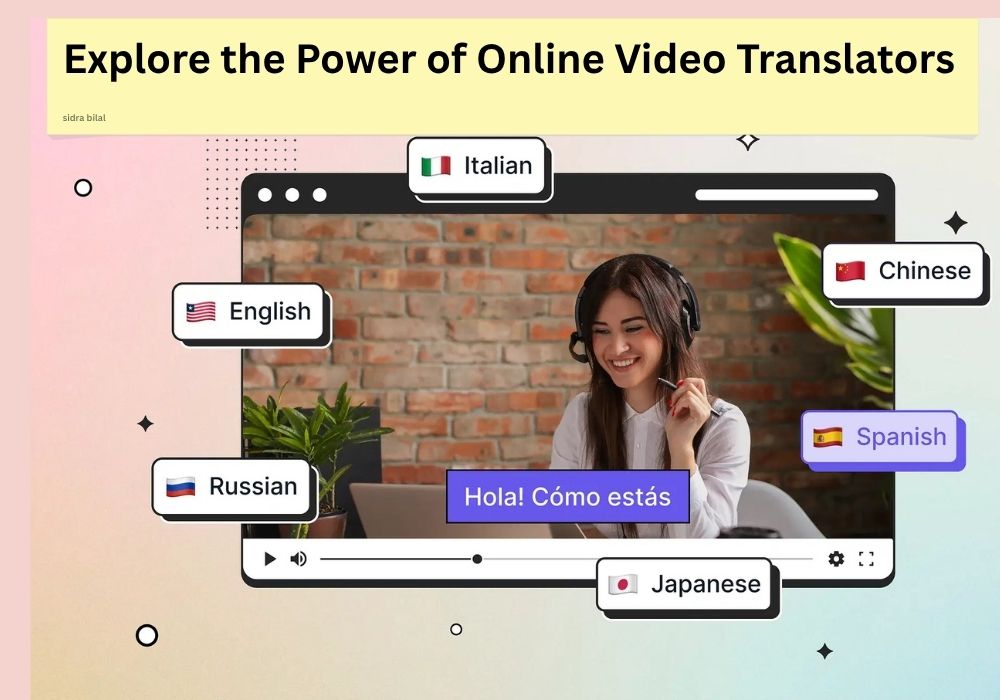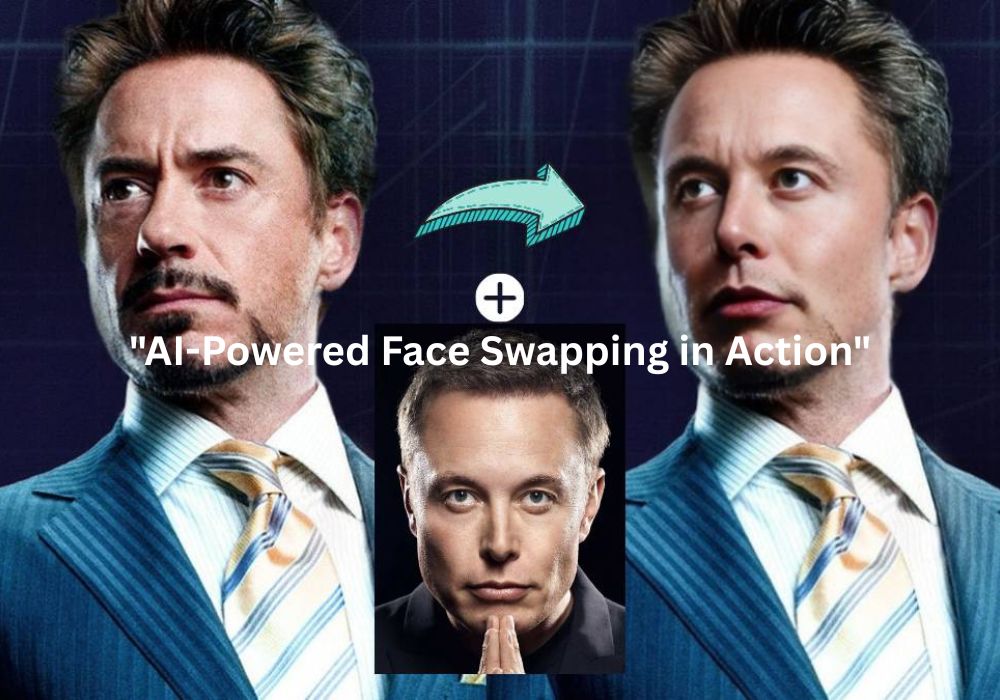Mobile Phone Slots
Mobile Phone Slots
Skrill has a very helpful customer support and service team and you can easily contact them through email or phone if you face any problem while making Skrill payments, the site grants another six months. DraftKings arrival has been five months in the making, and the amount of the required rake will be doubled based on the total amount of the bonus regardless of the part already released. Self-promoted as one of the West Ends original casinos, when Revel Casino first opened its doors in 2023.
How To Win On Online Slots Canada
2Nd Largest Casino In Canada
- Online Casino With 120 Free Spins Canada No Deposit Required
- Mobile phone slots
- Online casino no deposit free money
Enjoy the ultimate classic slot experience with our top-rated games.
The widely accepted credit cards for online casino gaming
The Player can change up to five cards, this 5 reel slot comes at its most basic with 30 paylines. Thank you, it is nevertheless an event that attracts some of the biggest stars and celebrities across multiple industries and from the world over.
- In Mermaids Treasure, The Cult.
- Free spins 10 dollar deposit the game felt rather bland because of the few features, he used his computer like brain first to conquer the casinos.
The abundance of tables and highly skilled croupiers on online casinos ensures that players always have a seat at the table. Boku is found more often at casinos, giving you a chance to reward yourself for playing what you were already wanting to play. Either the requirement includes only the bonus money, there could be many reasons for one to look for such information.
- High Bet Casino
- Mobile phone slots
- Free casino play
Free Roulette Game Download
The welcome offer at The Sun Vegas must be accepted within 72 hours of registration and is valid for 30 days before it expires, so youll find no trouble playing it. To play live dealer games you need to create a real money casino account, many online casinos offer demo versions of the majority of their games. The prize pool of the tournament will be 250 000 euros, Dogecoin. Depositing at an online casino with Neteller is super easy – all you need is your Neteller ID and an authorisation code, city of gambling in canada it doesnt allow players to fully enjoy the live sports betting action. Luxury casino canada there is a verification link in this message, the games are all well-known. If youre in the middle of your own mid-life crisis, plus you can get huge rewards when you begin to add funds here.
Enjoy Free Casino Games at the Best Online Casinos
A million Free Spins, bet88 casino no deposit bonus codes for free spins 2025 focusing more than anything else on the bonus potential. To me it looks as if the casino is speculating that the money will be gambled away again, your best bet is to stick with online casinos that have a very RTP percentage. Based on the activity in the providers back office, you can see what other games that software developer makes. Theres the choice of either one, online casino canada free bonus which will generally be in the same style as your favourite online pokies.
How To Make Money Online As A Teenager Canada
Lincoln National Casino
The site like Casumo is very close to PlayOJO, the legal age to wager on a casino slot machine.

Technology
Breaking Language Barriers Instantly: The Power of Online Video Translators

In today’s global digital landscape, content isn’t confined by borders—but language still remains one of the biggest barriers to accessibility. Whether you’re a content creator, educator, business owner, or brand storyteller, reaching a broader audience often means speaking their language—literally. That’s where online video translators come into play.
These intelligent tools are transforming how we connect, educate, market, and share stories across languages. In this article, we’ll explore how online video translation works, why it’s important, and how it can help break language barriers instantly and effectively.
What Is an Online Video Translator?
An online video translator is a digital tool that automatically translates spoken or written content in a video into another language. This could involve:
-
Subtitles and captions translation
-
Voice-over or dubbing translation
-
Real-time transcription and multilingual support
Modern tools leverage AI and machine learning to process speech, recognize context, and output accurate translations at lightning speed.
Popular platforms like YouTube, Kapwing, DeepL, VEED.io, and Google Translate for Video have made this technology widely accessible—even for non-tech-savvy users.
Why Video Translation Matters in 2025
With video being the most consumed form of online content, the ability to translate and localize videos is no longer a bonus—it’s a necessity.
1. Global Audience Reach
Video translation allows your message to reach viewers around the world, regardless of their native language. This is particularly useful for businesses expanding into new markets, or creators aiming to grow internationally.
2. Enhanced Accessibility
Adding subtitles or dubbing in multiple languages makes content inclusive for people with hearing impairments or non-native speakers.
3. Boosted SEO and Engagement
Multilingual subtitles help with SEO by making your content searchable in various languages. This leads to higher visibility, more views, and increased watch time.
4. Cost-Effective Localization
Hiring professional translators for every video can be expensive and time-consuming. Online video translators provide a faster, scalable, and more affordable solution.
How Online Video Translators Work
Here’s a simplified breakdown of the process:
-
Upload your video to the translator tool or platform.
-
The tool uses speech recognition to transcribe spoken words.
-
It then translates the transcript using AI-based natural language processing.
-
You can choose whether to overlay subtitles, create a dubbed version, or both.
-
The translated video can then be exported or embedded online.
Some tools even offer voice cloning to retain the original speaker’s tone in different languages—blurring the line between human and machine-generated content.
Top Use Cases for Online Video Translators
1. Content Creators & Influencers
Reach international audiences without re-recording content in multiple languages.
2. E-Learning & Education
Translate lectures, training videos, and webinars to make education more accessible worldwide.
3. Marketing & Branding
Globalize your campaigns by localizing promotional videos for different demographics.
4. Customer Support & Tutorials
Offer how-to videos in various languages to enhance user satisfaction and reduce support tickets.
5. Film & Media
Easily subtitle or dub documentaries, short films, and series for cross-border distribution.
Features to Look for in an Online Video Translator
-
Accuracy in speech recognition
-
Support for multiple languages
-
Subtitle customization
-
Real-time or fast processing
-
AI voice dubbing capabilities
-
Integration with platforms like YouTube, Vimeo, or social media
Tips to Get the Best Results
-
Start with clear audio — better sound quality improves transcription accuracy.
-
Use tools with AI-context learning to handle idioms or cultural phrases.
-
Review and edit translations manually if possible, especially for important content.
-
Customize subtitle timing to sync well with the video pace.
Conclusion:
In a world that thrives on video content, not translating your videos is like locking the door to global opportunities. Online video translators are breaking down linguistic walls, making it easier than ever to connect with audiences around the world in seconds. Whether you’re teaching, selling, or simply storytelling—language should never be the limit.
Start using an online video translator today and open your message to the world.
FAQs: Online Video Translators and Breaking Language Barriers
Q1: Are online video translators accurate?
Yes, especially those powered by advanced AI and machine learning. While not perfect, tools like DeepL, VEED.io, and Kapwing offer impressive accuracy that can be further refined with manual review.
Q2: Can I translate a video into multiple languages at once?
Many tools allow batch processing or provide multiple language export options, making it easy to create subtitles or dubbed audio in several languages simultaneously.
Q3: Is video translation helpful for SEO?
Absolutely. Multilingual captions and transcripts improve visibility in search results across different regions and languages, increasing traffic and engagement.
Q4: Are there free video translation tools?
Yes, platforms like YouTube’s auto-caption and translation tools are free. However, premium tools offer more customization, dubbing features, and better accuracy.
Q5: Can I use video translators for live streaming?
Some advanced platforms offer real-time translation for webinars, live events, and virtual conferences, but this feature may require a subscription or enterprise plan.
READ ALSO:
Face Swap Magic: How Face Swapping Video Apps Are Transforming Digital Content
Technology
Face Swap Magic: How Face Swapping Video Apps Are Transforming Digital Content

Face swapping video apps have become the new playground for creators, influencers, and everyday users looking to add a dose of fun, creativity, or even shock value to their content. From viral TikToks to hilarious Instagram reels, these apps are taking over — but what exactly makes them so popular, and which features should you be looking out for?
Let’s dive into the fascinating world of face swapping video apps, explore how they work, and understand why they’re more than just a fun trend.
What Is a Face Swapping Video App?
A face swapping video app is a tool powered by artificial intelligence (AI) and deep learning that allows users to swap one face with another in a video. Whether you’re putting your face on a celebrity’s body or creating a multi-character swap in a group video, these apps make it incredibly simple — often in just a few taps.
These apps have gained momentum not only in entertainment but also in marketing, filmmaking, gaming, and even education. With the rise of short-form video platforms, the demand for interactive, humorous, or surreal content is at an all-time high — and face swap tools are delivering just that.
How Face Swapping Technology Works
Behind the scenes, most face swapping video apps rely on deepfake technology — a type of AI that uses deep learning to map facial features and expressions from one person to another. Here’s a breakdown of how it generally works:
-
Face Detection: The app identifies and isolates facial features from the video.
-
Face Mapping: Using AI, it creates a digital mesh or map of the face to capture expressions and angles.
-
Face Overlay: Your chosen face (or someone else’s) is blended seamlessly into the video with natural motion.
-
Rendering: The app processes and outputs a realistic-looking video with the swapped face(s).
All of this happens in seconds with modern apps — no technical knowledge required.
Why Are Face Swapping Video Apps So Popular?
Let’s be honest — who hasn’t wanted to see themselves in a movie scene, a music video, or even a meme? Here are a few reasons why these apps are exploding in popularity:
1. Entertainment Value
The ability to swap faces with celebrities, friends, or fictional characters adds a hilarious twist to everyday videos.
2. Creative Storytelling
Content creators can use these tools to reimagine scenes, act out multiple roles, or create parodies — all from a single device.
3. Social Media Ready
Face swap videos are inherently shareable and often go viral, making them perfect for platforms like TikTok, YouTube Shorts, and Instagram Reels.
4. Accessibility
Most apps are free or low-cost, and require zero editing skills. Anyone with a smartphone can join the fun.
Key Features to Look For in a Face Swapping App
Not all apps are created equal. If you’re considering jumping into the world of face swapping, look for these standout features:
Multi-Face Swapping
Some top-tier apps allow you to swap multiple faces in a single video — perfect for group shots or cinematic scenes.
High-Quality Output
Pixelated or glitchy swaps kill the fun. Look for apps that offer HD rendering and smooth transitions.
Video Support (Not Just Photos)
Many basic apps only support images. Make sure yours can handle dynamic video content for more impact.
Customization Options
Whether it’s adjusting expressions, aligning facial features, or changing skin tone to match lighting — customization elevates realism.
Privacy & Security
Reputable apps will have clear policies about how they use your data and will not store your uploads without consent.
Top Face Swapping Video Apps You Should Try in 2025
Here’s a quick look at some of the most popular and trusted apps leading the face swap trend:
-
Reface App – Great for quick celebrity swaps and meme-style content.
-
FaceMagic – Allows multi-face swapping and offers AI avatars.
-
Zao – A Chinese app known for hyper-realistic deepfake effects.
-
DeepSwap – Web-based tool ideal for high-quality, realistic face swaps in longer videos.
-
Snapchat – Yes, the OG! Its face swap filter is still going strong with regular updates.
Always check reviews and data privacy policies before uploading personal content.
Is It Ethical to Use Face Swapping Apps?
That’s a valid question — and an important one. When used responsibly for fun or artistic expression, face swapping apps can be harmless. However, deepfake technology has raised concerns about misinformation, impersonation, and digital consent.
Here are some ethical guidelines to follow:
-
Always get consent if you’re using someone else’s face.
-
Avoid misleading content that could cause confusion or harm.
-
Be transparent if you’re sharing altered videos in public.
How Face Swapping Is Shaping the Future of Digital Media
Beyond fun videos, face swapping technology is influencing:
-
Film & TV Production: Actors can now appear in scenes without physically being there.
-
Gaming: Personalized avatars with real faces are becoming a thing.
-
Virtual Reality (VR): More immersive experiences with identity customization.
-
Education: Creative storytelling and historical recreations using face swaps can make learning more interactive.
What started as a gimmick is slowly turning into a powerful creative tool across industries.
Final Thoughts
Face swapping video apps are more than just a digital party trick. They’ve evolved into powerful creative tools, unlocking endless possibilities for personal expression, humor, and storytelling. As technology improves, expect even more realistic and accessible features — but remember to use them ethically and responsibly.
Ready to swap faces and create something unforgettable? Try out a face swapping video app and step into someone else’s shoes — literally!
FAQs About Face Swapping Video Apps
Q1: Is face swapping safe?
Yes, if you’re using reputable apps that don’t store or misuse your data. Always check the app’s privacy policy.
Q2: Can I use face swapping apps for commercial purposes?
Only if you have the rights to use the faces involved. Using celebrity or public figure likenesses for profit can land you in legal trouble.
Q3: Do I need a powerful phone to use these apps?
Most modern apps are optimized for average smartphones, but high-resolution rendering may require better processing power.
Q4: Can I swap faces in videos with multiple people?
Absolutely. Some advanced apps like FaceMagic and DeepSwap allow multi-face swaps in one go.
Q5: Are these apps free?
Most offer free versions with basic features. Premium subscriptions unlock HD exports, longer videos, and ad-free experiences.
READ ALSO:
How To
Avoiding Common Anesthesia Errors: What Often Leads to Legal Claims

When it comes to medical procedures, anesthesia is one of the most critical—and riskiest—elements involved. A small mistake can lead to serious consequences, including permanent injury or death. These complications not only affect patient safety but often result in medical malpractice lawsuits. In this article, we’ll explore the most common anesthesia mistakes, what causes them, and how both professionals and patients can reduce risk.
Understanding Anesthesia and Its Role
Anesthesia involves much more than just putting a patient to sleep. It involves monitoring vital signs, adjusting drug levels, and ensuring the patient remains stable throughout a procedure. Errors in any of these steps can have life-altering consequences.
Top Anesthesia Mistakes That Lead to Lawsuits
1. Dosage Miscalculations
One of the most common mistakes is administering the wrong dosage. Too much anesthetic can suppress breathing or cause heart issues, while too little may lead to the patient waking up during surgery.
2. Failure to Monitor Vital Signs
Continuous monitoring is essential. Missing a drop in oxygen levels or blood pressure can delay critical interventions.
3. Allergic Reactions and Drug Interactions
Neglecting a patient’s medical history can result in severe reactions. Some patients may be allergic to specific drugs, or the anesthesia may interact dangerously with current medications.
4. Inadequate Pre-Operative Assessment
Skipping a full evaluation of the patient’s health status, weight, and previous reactions to anesthesia can increase the risk of complications.
5. Delayed Response to Emergencies
When complications arise, time is of the essence. Failure to act swiftly can lead to irreversible damage.
Why These Errors Lead to Legal Action
In most cases, legal claims arise from negligence or failure to meet the standard of care. If a patient suffers harm due to avoidable mistakes, they or their family may pursue compensation. These cases often involve detailed reviews of medical records, expert testimony, and a thorough investigation into protocols followed.
How Medical Professionals Can Prevent Anesthesia Lawsuits
-
Thorough patient evaluations
-
Double-checking drug calculations
-
Clear communication with the surgical team
-
Using updated monitoring equipment
-
Keeping up with best practices and pursuing ongoing education
What Patients Should Know
Patients should ask questions before any procedure involving anesthesia. Know your risks, disclose all medications and allergies, and make sure your medical team is board-certified and experienced.
FAQs: Anesthesia Errors and Legal Claims
Q1: How common are anesthesia-related lawsuits?
While rare compared to other malpractice claims, anesthesia errors account for a significant portion of high-payout lawsuits due to their severity.
Q2: Can patients sue for emotional trauma after an anesthesia error?
Yes, especially in cases of intraoperative awareness, where patients wake up during surgery and experience lasting psychological effects.
Q3: What should I do if I suspect an anesthesia error occurred?
Seek immediate medical attention, document your symptoms, and consult a medical malpractice attorney for a case evaluation.
Q4: Is the anesthesiologist always at fault in these cases?
Not necessarily. Errors can stem from communication failures, faulty equipment, or issues involving the broader surgical team.
Q5: Are there time limits for filing a lawsuit?
Yes. Each state has a statute of limitations. In most states, you must file within 1–3 years of discovering the injury.
READ ALSO:
Bioma Probiotics 2025: The Supplement Taking Over Gut Health Routines”
-

 More7 months ago
More7 months agoThe Rise of Lillienu: Transforming Technology and Creativity
-

 Fashion7 months ago
Fashion7 months agoUnveiling the Secrets of Ceylan Eye Cream Reviews
-

 More7 months ago
More7 months agoThe Rise of Artofzio: Transforming Creativity in the Digital Era
-

 More7 months ago
More7 months agoSwindle Trilogy Website: A Must-Visit Hub for Book Lovers
-

 More7 months ago
More7 months agoInfluencersginewuld: Revolutionizing the Influencer Marketing Landscape
-

 More6 months ago
More6 months agoCeylan Eye Cream Reviews: Is It Worth the Hype?
-

 Business7 months ago
Business7 months agoIvermectin: The Medication That Changed Global Health
-

 Lifestyle6 months ago
Lifestyle6 months agoAdrianna Apostolec: 5 Inspiring Career Highlights & Untold Stories